“Her sense of film is to, say, take an avocado, film it for six days and have, like, mosquitoes buzzing around in the background… I think she is probably my greatest influence, my favourite artist.”
– Sean Ono Lennon, 2006
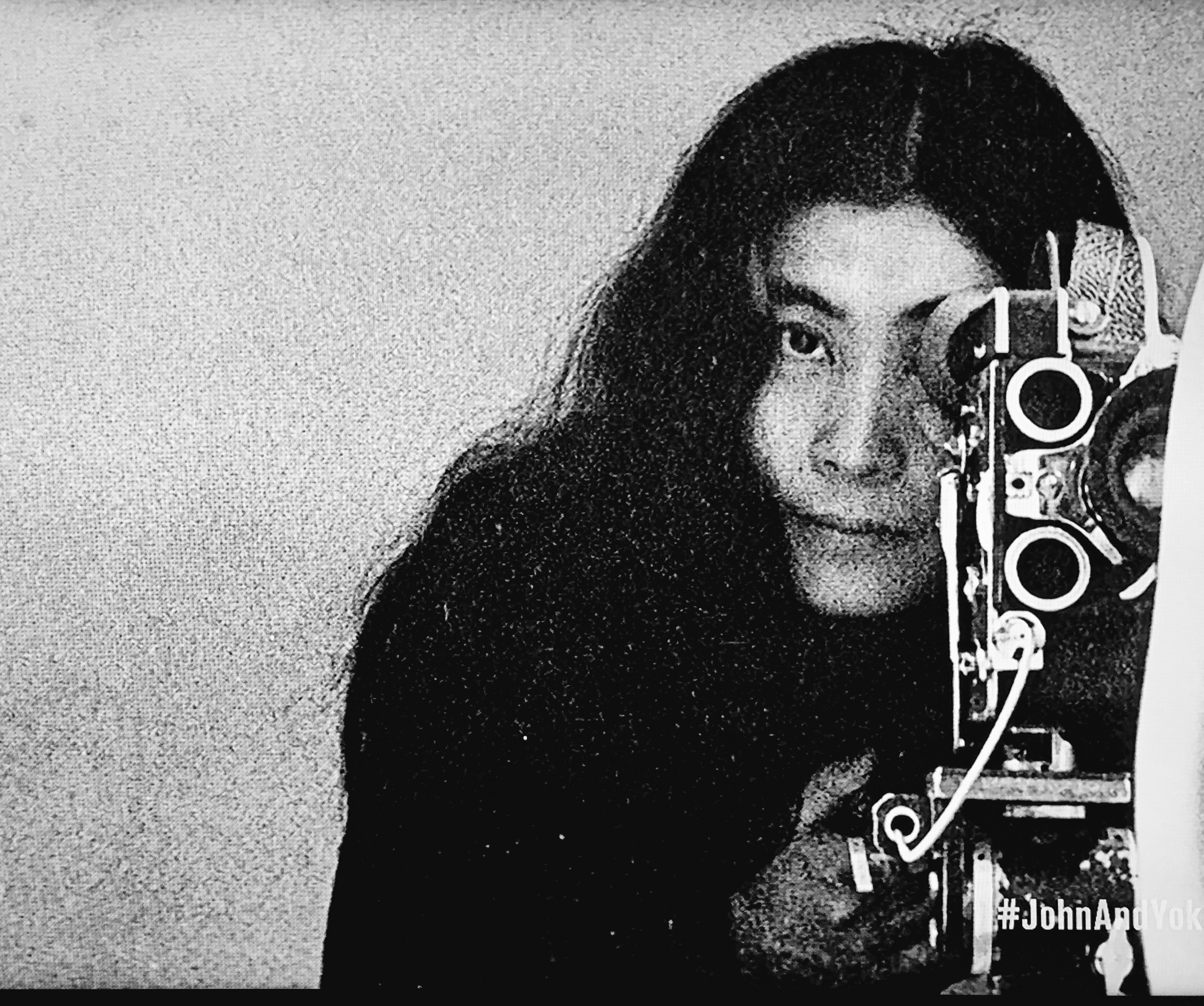
Read my stories about Yoko’s films at the links below each description:
All stories by Madeline Bocaro ©
© Madeline Bocaro, 2019. No part of this site may be reproduced in whole or in part in any manner without the permission of the copyright owner.
This is an excerpt from my Yoko Ono biography…
Read all about the book, see the reviews and
Order here:
https://madelinex.com/2021/12/19/my-new-book/

See below for more information…
“I was a movie buff… In prep school in Tokyo (in the late 1940s) you were supposed to go directly home after school. But most kids often went to the movies. We used to hide our school badges and sneak into the theatre… I mostly saw French films. There was a group of kids who like American films- Jimmy Stewart and Katharine Hepburn, Doris Day and Rock Hudson, Bob Hope and Bing Crosby- and there was another crowd of girls who thought they were intellectuals, and went to French films. I was in the French film group. We would go to see The Children of Paradise (1945), that sort of thing. It was a very exciting time. I loved those films… I saw the surrealist films in the sixties in New York and Paris. The films I saw in high school that were closest to surrealism wee the Cocteau films, Beauty and the Beast and Orpheus (1950). Those films really gave me some ideas.
– Yoko, A Critical Cinema by Scott MacDonald: Yoko Ono May 1, 1989
Yoko Ono’s first conceptual filmic ideas were scripted in her 1964 book Grapefruit. Some of them became a reality. Films were also made of her performance art pieces such as the nine-minute Cut Piece (1965) and the twenty-minutes Wrapping Piece (1967).
“Film involves so many things – getting a camera, editing table, whatever. I didn’t have access to any of that. I’m not mechanically minded anyway; I come from that age. So I wasn’t into filmmaking at all, but I had filmic images in my head. In order to compromise the situation, I started to get into a form of film which is not done physically but just with instructions. A person reads the instructions (and this is different from a film script because the instructions themselves are the film) and does his version of that film. Which means there could be many different versions of that film. Even if somebody copies someone else’s idea, it’s still going to be slightly distorted, slightly different – and that in itself is interesting. Films made from these instructions become very event-like; it’s not like making a film just by shooting with a camera. For instance, you put on a film and the instruction might be to close one eye so you don’t have to watch Rock Hudson; you can just watch Doris Day. Or you take a pair of scissors and whenever there’s a curved object on the screen you go and cut out that part. And of course by the time you’re cutting it, it’s changed, so you don’t know what you’re cutting. So I started in film that way.”
– Yoko, Filmmakers Newsletter by John & Yoko, June 1973
Film No. 1 – A Walk To the Taj Mahal – 1964
Although the film was conceived in 1964 – the score appears in Grapefruit, it was made in 1966.
Film No. 1″ (a.k.a. A Walk To the Taj Mahal, a.k.a. Fluxfilm No. 14: One) takes the viewer on a trip through a snowstorm. The silent 5-minute movie feels as though we are not watching a film but that we are inside the action.
“There was a constant feeling of wanting to take an object that’s on the ground – not necessarily an object, could be a person – in fact the original idea was a drunken guy walking in a snowy field; you dn’t see the drunken guy, but the camera suggests that he’s drunk because of the way it moves. So he walks and sways, and finally the camera goes up in the sky…”
– Yoko, 1989 – A Critical Cinema 2: Interviews with Independent Filmmakers – Scott MacDonald

Disappearing Music For Face by Chieko Shiomi – 1966
Yoko appears in this eleven-minute 16mm Flux film made by Chieko Shiomi. It is Yoko’s smile in the film. Fluxus founder George Maciunas had acquired a high-speed camera and needed film ideas. Yoko had been wanting to make a smile film, but Shiomi had a different smile idea.
“Later I found out that her concept was totally different from what I wanted to do. Chieko Shioimi’s idea is beautiful; she catches the disappearance of a smile. At the time I didn’t know what her title was.”
– To Scott MacDonald, A Critical Cinema May 1, 1989
Fluxfilm no. 14: One
Match striking fire…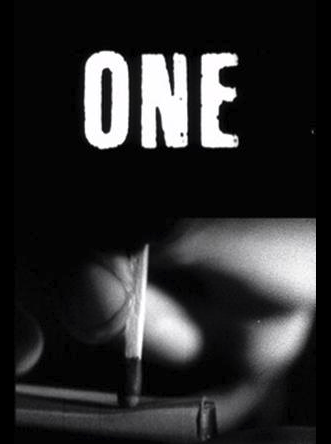
Read here:
Eye Blink – 1966
A short film of Yoko’s eye blinking in slow motion.
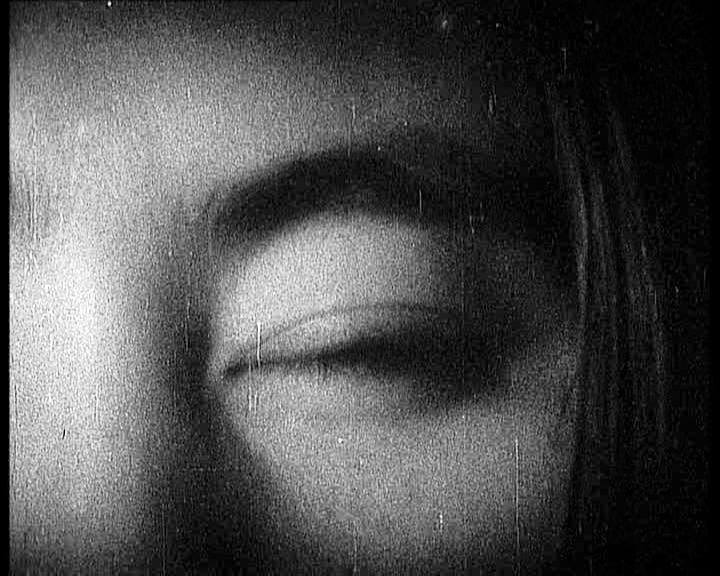
Getting to the Bottom of Film No. 4: Bottoms
In 1967, a young Japanese artist turned the film world upside down with her strange movie. After making several short films and as part of the Fluxus movement, Yoko Ono had yet another brilliant idea. Her script read, ‘String bottoms together in place of signatures for petition for peace…’
Read here:

Wrapping Piece
Yoko’s Trafalgar Square wrapping event in London (August 3, 1967) had political undertones. London police gave her permission to wrap a lion statue with drop-cloths only because Yoko gave them the pretense that she was making a film. Her then husband Tony Cox photographed the event. In 1967 Delia Derbyshire (known for the Doctor Who theme) created a soundtrack for the 20-minute film at Kaleidophon for Yoko Ono Productions. While it is rumored to exist, the soundtrack has not surfaced. The film was shown at the ICA in London in 2004 without a soundtrack.
Read more here:
Film No. 5: Smile
John and Yoko’s Film No. 5 (Smile) premiered at the Chicago Film Festival in 1968. The film is a very long close-up of John’s face shot in super slow motion, with film that is used for shooting footage of rockets. The only action is of John simply smiling. The actual time lapse is three minutes, elongated to 52 minutes. The effect is, as Yoko describes, having a light painting on the wall…
Read here:
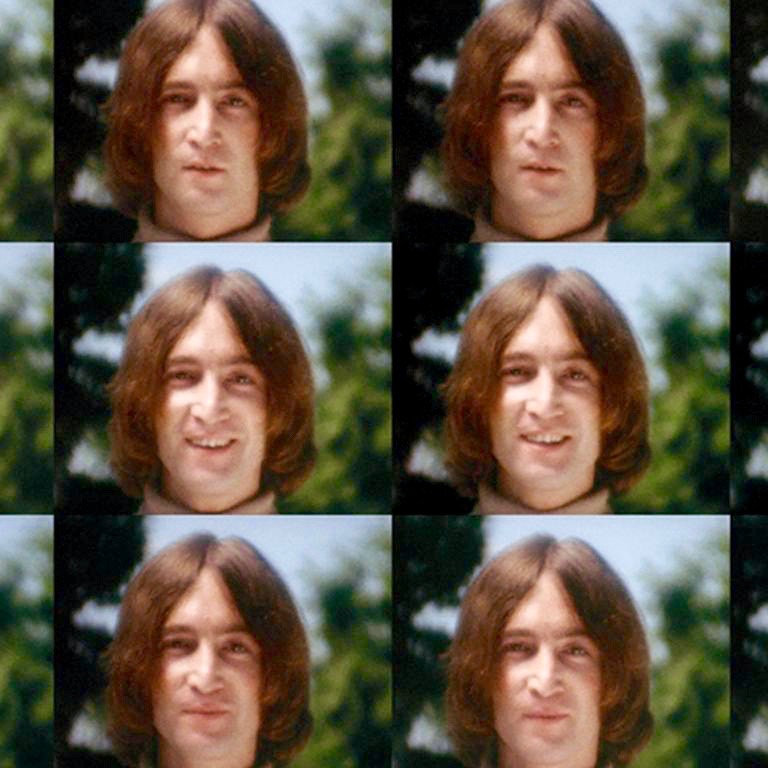
Two Virgins
Two Virgins (filmed on the same day as Smile) is a moving portrait of John and Yoko in their garden at Kenwood in Weybridge. Their images separate and entwine until their faces become superimposed, separating and merging perfectly. They embrace and kiss in slow-motion, becoming one with the sky and clouds.
Read here:
Self Portrait
A John and Yoko home movie called Self Portrait was a slow-motion film of John’s semi-erect penis. The film was 42 minutes long. It premiered at London’s Institute of Contemporary Arts in September 1969. In 1971, John recalled the film on a BBC TV interview with Michael Parkinson; “That was a joke really. I made a film called ‘Self Portrait’, you know, and at that time I was a bit of a prick!”. Yoko had said “The critics wouldn’t touch it.” Self Portrait was partially inspired by Warhol’s film Blow Job (see Erection below).
John: I made one called Self Portrait… my prick… that’s all you saw – for a long time. No movement, but it dribbled at the end. That was accidental. The idea was for it to slowly rise and fall… but it didn’t.
Yoko: Very delicate…
John: Yes. Self Portrait. That was just about what I was – a prick.
Yoko: I was the director and as a good director, I tried to excite him with some clothes… to get an erection, but nothing happened. He was too nervous.
John: We were alone in that room, but there was that massive, giant thing there – the camera – and all those lights. You couldn’t get sexy. And she was doing all those things.
Yoko: So instead of getting an erection, he just dribbled.
– John & Yoko @ Cannes – The Village Voice to Amos Vogel, June 24, 1971
Erection
Despite its suggestive title, Erection (often mistaken for Self Portrait) is a 19-minute time-lapsed film of the construction of the International Hotel (147 Cromwell Road, London). A still camera was set up, shooting over the course of eighteen months. Yoko’s track ‘Airmale’ (from her album Fly) was the soundtrack for Erection (a reverse homage to Andy Warhol’s film Blow Job, which features the close-up face of a man receiving a blow job). It also parodies the title of Andy Warhol’s film Empire, which consisted of nothing but the Empire State Building.
John: I’m making a movie now about an erection
Yoko: The biggest erection ever.
John: It’s all shot from one camera position, with single frame animation and shows the erection of a hotel, from scratch. I think it will start in the morning and end at night when it’s all up, with all the lights on.
– John & Yoko @ Cannes – The Village Voice to Amos Vogel, June 24, 1971
Clock
Clock is a one-hour close-up of a clock face shot at the St. Regis Hotel in New York in September 1971. Just having left England for the last time ever, John and Yoko stayed at the St. Regis for many months. John’s soundtrack included acoustic versions of Rock and Roll standards which he recorded on September 10th .
Film No. 7 – Tea Party (Conceptual)
by yoko ono, copyright 1968
1 ½ hr. Colour. Synchronized sound. Cast: a woman.
A woman is having a tea party in a room. We never see others except the woman. She says You weren’t listening, were you. After that she says nothing for the whole film.
The film is basically about a room with many different time worlds in it. A clock is going fast like crazy. A sugar in a glass melts spasmodically. The woman’s dress deteriorates very fast. A car passing in the street, which is reflected in the woman’s eyes, going ever so slowly. A chair melts away like something made out of dust, etc. In the end, the telephone is the only thing remaining in the room. Everything else disappears with its own time rhythm.
The woman will have to be a Japanese woman with very good breasts. The scene has a peculiar mixture of a Japanese tea ceremony and an English tea party.
– This Is Not Here exhibition catalog (Everson Museum, Syracuse NY 1971)
Yoko still had Tea Party on her mind in 1989
“I’m not getting that feeling like I gotta make a film- except for The Tea Party [the film script “Film No.7 (Tea Party)”]: for years I’ve been wanting to make that one, but because of the technical difficulties I don’t seem to be able to get it together. I think one of the reasons I’m not making more films is that I’ve done so many film scripts. I’d like to see one of them made by somebody else. Maybe one day out of the blue I’ll feel it so strongly that I’ll make a film myself again.”
– to Scott MacDonald: A Critical Cinema – May 1, 1989
Apotheosis
The meaning of Apotheosis is ‘elevation or exaltation to the rank of a god’ / ‘rising of the spirit’.
“When I made this film, I didn’t even know what the word ‘apotheosis’ meant, but I showed the film to some friends and somebody said: ah, that’s apotheosis… and I said, ‘What’s that? And he said: ‘the rising of the spirit… so, okay, I called it that.” – John
“Usually, when something goes up, it comes down… but in this film, it just goes up and up and up and that’s really beautiful.” – Yoko
– John & Yoko @ Cannes – The Village Voice to Amos Vogel, June 24, 1971
The film starts with John and Yoko (wearing black capes and hoods) watching a hot air balloon being inflated. The location is the snowy market square in the countryside village of Laverham in Suffolk, England. Their cameraman Nicc Knowland shot still photos of the couple in the grounded balloon before they exited the basket prior to the launch.
The Lennons stood by, along with the crowd of locals who had gathered to watch the filming. The short film consists of the balloon rising up into the clouds, then re-emerging in the clear blue sky. Knowland mostly captured images of the sky. The soundtrack is the sound of the crowd, with some barking dogs.
“Suddenly the cloud landscape opened up like a huge poem, you could see the tops of the clouds, all beautifully enveloped by sun, stretching into infinity…”
-Jonas Mekas, 1972
The first version of Apotheosis was filmed in September 1969 from a helicopter. John and Yoko were unhappy with the first shot. A re-make was done in December along with BBC Television’s World of John & Yoko crew who had been filming the couple for a documentary. John and Yoko were driven through the snow-covered countryside to Lavenham, Suffolk.
“Both John and I really enjoyed doing the shoot there,” Yoko continued. “I would love to go back there… but it’s not the same for me without John.”
– Yoko, 2010
Apotheosis was screened at the Cannes film festival along with Yoko’s film Fly on May 15, 1971.
Rape
In November 1968 work began on John & Yoko’s film Rape. The 77-minute film was shot in London for Austrian television and debuted on March 31, 1969. The script was conceptualized by Yoko in 1968 (as part of Thirteen Film Scores) and was shot according to Yoko’s written instructions:
“The cameraman will chase a girl on a street with a camera persistently until he corners her in an alley, and, if possible, until she is in a falling position…” 
Read here:
Freedom Films- 1971
Two one-minute films were shown at the 1971 Chicago Film Festival.
Freedom, shot in 1970 is a one-minute long close-up of Yoko’s hands trying to tear open her bra. The minimalist experimental soundtrack is by John Lennon on an electronic keyboard.
Watch: https://youtu.be/G7-egx5ke8w
The second Freedom Film consisted of the word “Freedom”, which John had scratched on to a piece of film.
Up Your Legs Forever
This 80-minute film was shot in December 1970 in New York for a John and Yoko Film Festival organized by Jonas Mekas at the Elgin Theatre. They made two films – Up Your Legs and Fly.
Up Your Legs Forever was made in two days at a soundstage on 61st St. in New York City. The camera individually pans upward on 300+ pairs of legs from the front – from the toes up to the top of the thighs. The soundtrack was comprised of conversations during filming.
“We asked everybody to donate their legs for peace” – Yoko.
Many celebrities obliged, including George Segal, Larry Rivers and filmmaker D.A Pennebaker. The film ends with two pair of legs filmed from behind – John and Yoko showing their bare bottoms. As with Film No. 4 (Bottoms) we ponder the difference in appearance of the legs in the film.
“… they’ll see that there’s no difference between famous and not-so-famous legs, intellectual and non-intellectual legs. When it comes to legs, titles or fame or power or money are of no importance because we’re all just very modest beings.”
– Yoko to Jonathan Cott, Days That I’ll Remember, 2013
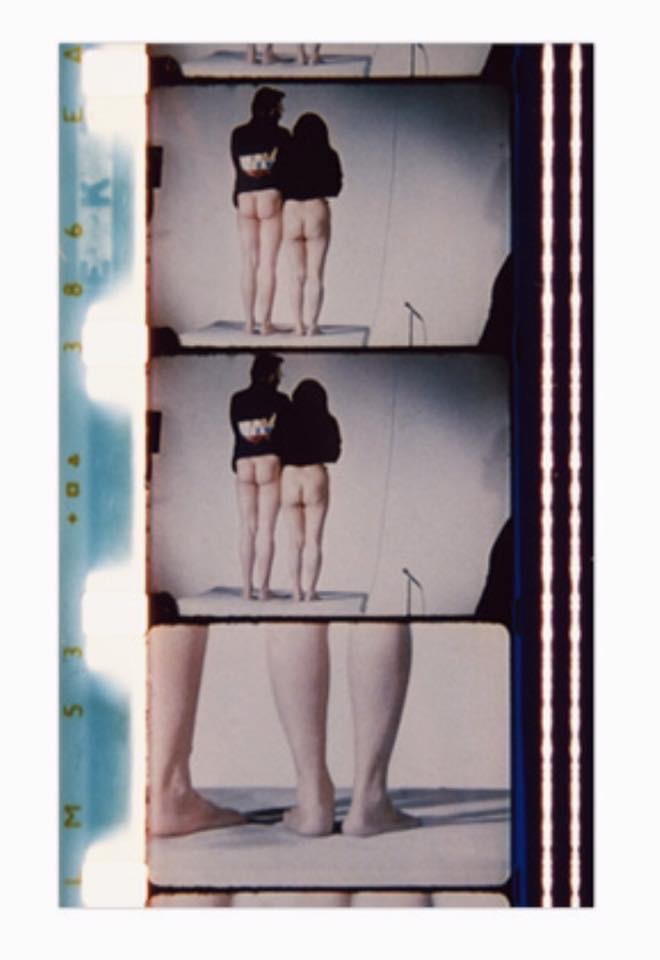
Fly 1971
The star of Yoko‘s film had many stand-ins. This was partly because the actor was incompetent, and mostly because it was an insect – a fly! There were actually a few hundred uncooperative little buggers on set. The naturally frantic flies had to be controlled for their performance…
Read here:

Yoko: “Once you turn the camera on, you never get the facts. The camera changes everything, you know, the tiniest atoms can’t even be seen because the weight of the light observing them changes them. The same with film. So what we do instead is to show things in our films as fiction and then truth comes out of them anyway.”
– John & Yoko @ Cannes – The Village Voice to Amos Vogel, June 24, 1971
The Museum Of Modern Art Show
This is a 7-minute film of Yoko’s conceptual exhibition at the Museum of Modern Art (1971) in New York City. Yoko advertised her exhibition in The Village Voice. She also printed a catalogue in which Iain MacMillan photographed flies which were superimposed onto various New York locations. The film is comprised of interviews with people leaving the museum who are asked what they thought of the “show”. Staff who worked at the museum apparently knew nothing about it and were not amused.
Free Time
John and Yoko – Free Time – PBS Television, May 1972
“I want to deal with the world that is in subconscious. Not the world in consciousness but underneath the consciousness. That is where I am.”
– yoko
“I’ve never seen a TV show like this before. Maybe I’m on the wrong channel!”
– john
Read Here:
Imagine – The Restoration (2017)
The new restoration is incredible! I attended the one night only showing on the big screen in NYC. Imagine is such a great video album – one of the earliest ever made. I have been watching various blurry versions of Imagine for decades, ever since John and Yoko premiered some clips on The Mike Douglas Show in 1971. I never thought it could look and sound so much more wonderful! The sound was in Dolby Atmos (whatever that is, it sounded amazing)!
Read here:

Yoko Ono – Films and Talks -@ MoMA 2015
As part of the exhibit Yoko Ono: One Woman Show at the Museum of Modern Art in 2015 summer, Yoko also appeared for several events and concerts at the museum. Both nights of her film screenings with Q&As afterwards began with a wonderful montage of films, compiled by Yoko’s archivist. Yoko sat in the front row watching the films along with us…
Read here:
© Madeline Bocaro 2019. No part of these materials may be copied, photocopied, reproduced, translated, re-blogged or reduced to any electronic medium or machine-readable form, in whole or in part, without prior written consent of Madeline Bocaro. Any other reproduction in any form without permission is prohibited. All of the text written by Madeline Bocaro on this site is protected by United States copyright law and may not be reproduced, distributed, transmitted, displayed, published or broadcast without prior written permission of Madeline Bocaro.

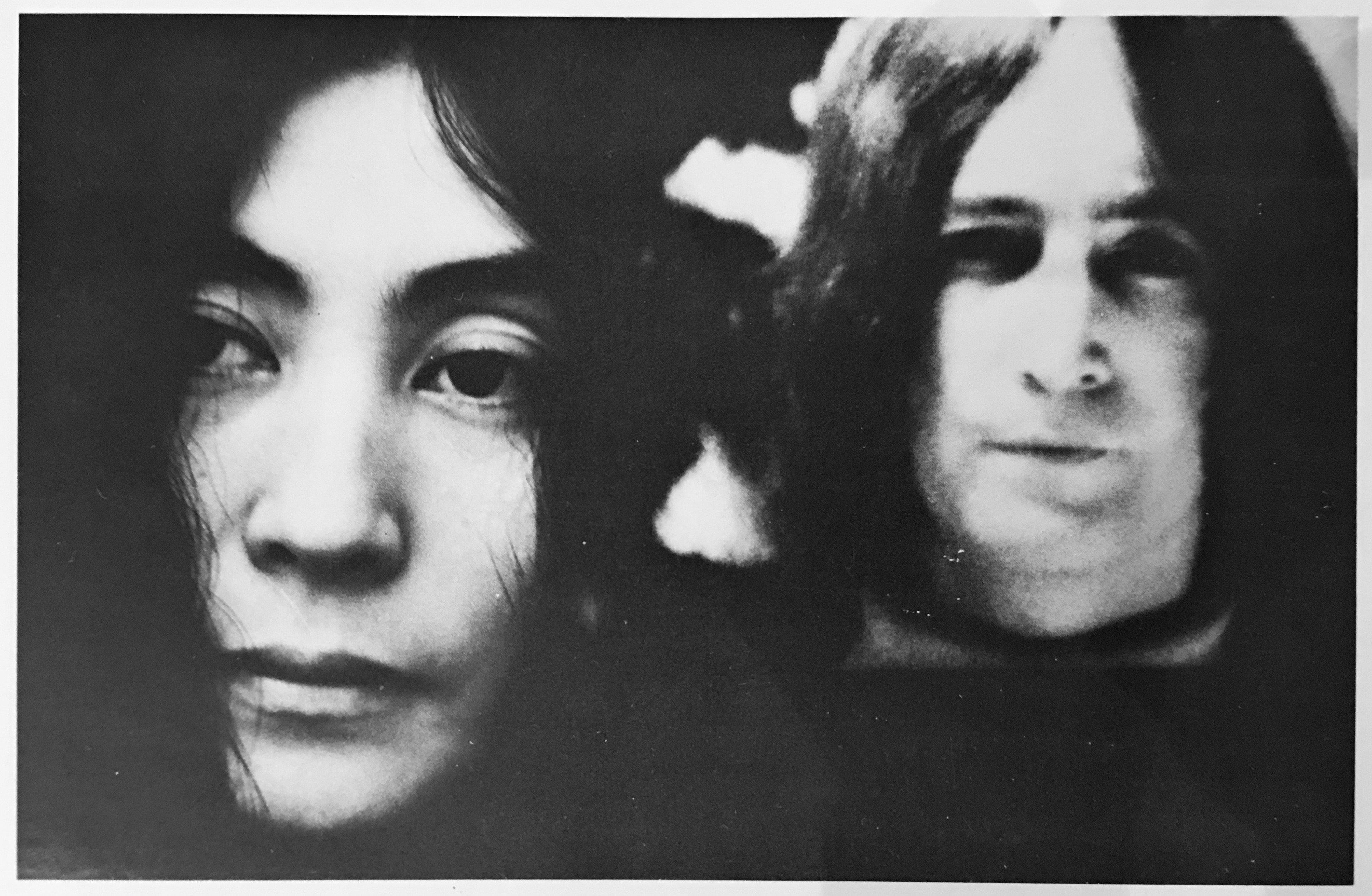
This story is an excerpt from my Yoko Ono biography
In Your Mind – The Infinite Universe of Yoko Ono
An all-embracing look at Yoko Ono’s life, music and art – in stunning detail.
Read all about the book, see the reviews and
Order here:
https://madelinex.com/2021/12/19/my-new-book/
HARD COVER books are only available at…
Conceptual Books
Contact: conceptualbooks@icloud.com
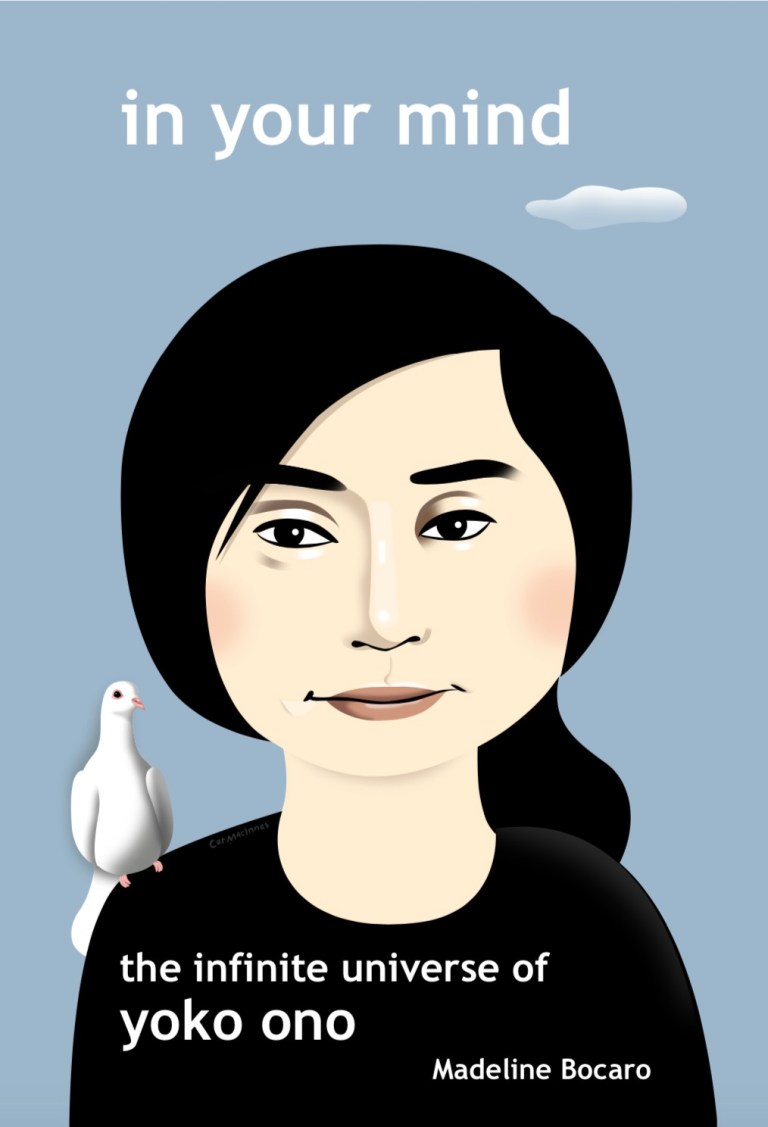




Everything and everyone I love is here it seems – how fortunate I have been to discover this incredible blog. I’m telling everybody. Hat’s off!
I’m loving this material. Many thanks.